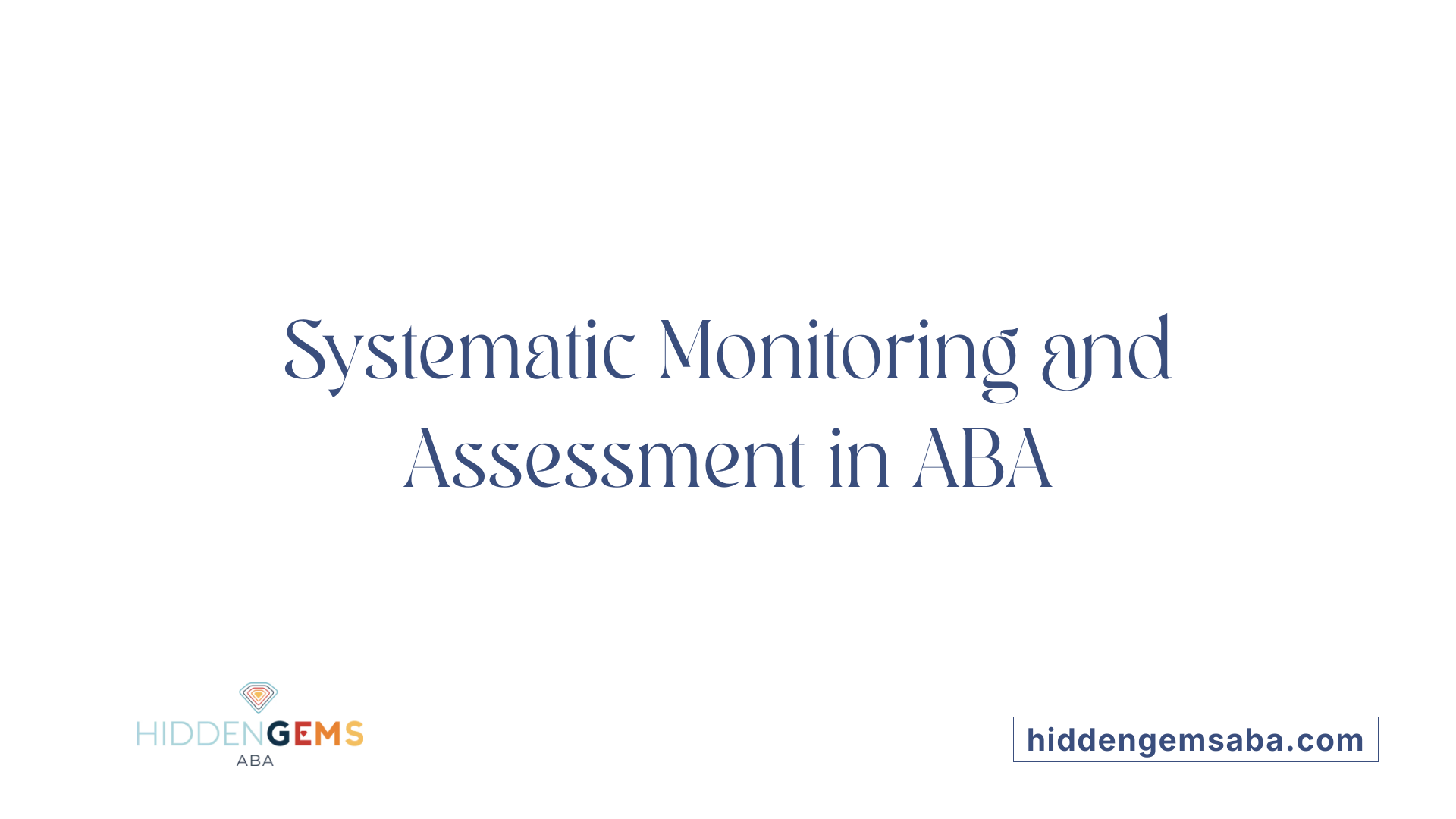Understanding the Foundations of ABA Therapy for Behavior Management
Applied Behavior Analysis (ABA) is a scientifically validated approach rooted in the principles of learning and behavior. It is widely used to support individuals, particularly children with autism spectrum disorder (ASD), in developing essential skills while reducing problematic behaviors. Its effectiveness is backed by extensive research, making it a cornerstone of behavioral intervention for various populations.
The Core Principles of ABA and Their Role in Behavior Change
What are the principles of ABA therapy used to modify behaviors?
Applied Behavior Analysis (ABA) is built on fundamental behavioral principles developed through research and theory from behavioral psychology. These principles include reinforcement, punishment, stimulus control, and shaping, which are used to effectively change behaviors.
Reinforcement involves encouraging desired behaviors by providing positive consequences, like praise or rewards, which increases the likelihood of repetition. Conversely, punishment can reduce undesirable behaviors by applying aversive outcomes or removing positive stimuli, though it is used cautiously within a well-structured context.
Stimulus control refers to associating specific cues or environments with particular behaviors, so the presence of certain triggers can evoke the behavior or inhibit it. Shaping is a process where complex or new behaviors are taught by reinforcing successive approximations—small steps that gradually lead to the target behavior.
ABA carefully examines the environment, focusing on antecedents—events or conditions that occur before a behavior—and consequences—what happens after the behavior—that sustain or diminish it. By adjusting antecedents, such as providing visual supports or priming tasks, therapists can set the stage for success.
Breaking down complex behaviors into manageable steps is a central technique called task analysis. This involves decomposing a skill, like dressing or communication, into smaller, teachable components, which are reinforced individually until the complete skill is mastered.
Through these principles, ABA programs are tailored to the individual’s needs and are aimed at promoting functional skills, reducing problematic behaviors, and fostering independence. By systematically applying these methods, ABA helps individuals access more adaptive behaviors across various environments such as home, school, and community settings.
Tailoring ABA Programs to Individual Needs
In ABA therapy, individual assessments are essential to designing effective programs that meet each child's unique needs. These assessments help identify the child's strengths, difficulties, and specific behaviors that require intervention, forming a baseline for setting goals.
Behavior analysts, particularly Board Certified Behavior Analysts (BCBAs), play a crucial role in customizing interventions. They analyze assessment data, develop detailed treatment plans, and supervise the implementation of strategies to ensure they are appropriate and effective for the individual.
A core tool used in personalizing ABA programs is the Functional Behavior Assessment (FBA). This thorough process investigates the reasons behind specific behaviors by observing patterns in various settings. FBAs identify triggers, functions, and consequences of behaviors, such as seeking attention, escaping tasks, or sensory stimulation.
By understanding these functions, BCBAs can develop targeted interventions like modifying environmental factors, using positive reinforcement, or teaching alternative behaviors. This approach not only reduces problematic behaviors but also promotes skill acquisition in communication, socialization, and daily living skills.
| Aspect to Consider | Role and Purpose | Additional Details |
|---|---|---|
| Individual Assessment | Establishes a baseline tailored to each child's needs | Guides goal setting and intervention planning |
| Role of BCBAs | Customize and oversee interventions based on assessments | Ensure strategies are effective and adaptable |
| Functional Behavior Assessment | Identifies reasons for behaviors to inform intervention | Helps develop specific strategies like replacement behaviors |
Implementing an individualized ABA program maximizes its effectiveness, ensuring that each child receives support aligned with their developmental profile. This targeted approach is fundamental to helping children with autism develop essential skills and reduce challenging behaviors, leading to improved independence and quality of life.
Strategies and Techniques for Reducing Challenging Behaviors

What techniques and strategies are used in ABA therapy for reducing challenging behaviors?
ABA therapy incorporates a variety of strategies aimed at decreasing problematic behaviors while promoting positive ones. One of the primary approaches involves understanding and modifying environmental factors or triggers. For example, therapists may adjust daily schedules or provide choices to give children a sense of control, which can reduce anxiety and outbursts.
Visual supports play a significant role in making routines and expectations clearer. Visual schedules, pictures, or symbols help children understand what to expect, reducing confusion and behavioral issues. These supports make the environment more predictable and accessible.
Consequence-based interventions are essential. They include reinforcement strategies that encourage desirable behaviors, such as praise, tokens, or preferred activities. When challenging behaviors occur, responses like response cost (removing a reward or privilege) or withholding reinforcement can diminish the behavior's occurrence.
Proactive techniques focus on teaching functional communication skills, which serve as alternatives to challenging behaviors. For instance, a child might learn to use sign language or picture exchange systems to express needs, reducing the frustration that often leads to disruptive behaviors.
Data collection and ongoing assessments are fundamental to customizing interventions. By systematically tracking behaviors and responses, therapists can adjust strategies to better suit each child's specific needs, ensuring more effective and sustainable behavior management.
Implementing these strategies in a consistent and comprehensive manner allows for meaningful reductions in disruptive behaviors, ultimately supporting children in developing healthier responses and more adaptive skills.
Monitoring and Assessing Behavior in ABA Treatment

How is behavior monitored and assessed during ABA therapy?
In ABA therapy, careful and systematic data collection is essential for tracking progress and adjusting interventions. Therapists often use methods like recording how often a behavior occurs (frequency), how long it lasts (duration), and how it happens in intervals (interval recording). These techniques help identify patterns and measure changes over time.
Another vital tool is ABC data collection, which records the Antecedents (what happens before a behavior), the Behavior itself, and the Consequences that follow. This approach helps determine why a behavior occurs and guides targeted interventions. Permanent product recording might also be used when the outcome of a behavior can be measured after it occurs, such as completed homework or task steps.
Visual data analysis plays a significant role in understanding progress. Graphs and charts are created from the collected data, making it easier to see trends and evaluate whether intervention strategies are effective. Regular review sessions involve analyzing these visual representations to inform decisions.
Assessment relies on a blend of direct observations—where therapists watch and record behaviors as they happen—and indirect assessments. Questionnaires, checklists, and interviews with caregivers provide additional context about the behavior outside therapy sessions.
This combination of data sources ensures a comprehensive view of progress, allowing for tailored adjustments in treatment plans. When interventions are based on solid, ongoing data analysis, children can achieve meaningful improvements in communication, social skills, and behavior management.
The Impact of Data-Driven Interventions on Behavior Outcomes
How is behavior monitored and assessed during ABA therapy?
In ABA therapy, behavior is continuously tracked through systematic data collection techniques. Therapists often record the frequency, duration, and intervals of specific behaviors to understand how often and how long behaviors occur. Methods like ABC (antecedent-behavior-consequence) data help identify the contextual factors influencing behavior. Direct observations are complemented by indirect tools such as checklists, questionnaires, and analysis of permanent products, which provide additional insights.
Regular review of this data, often displayed in graphs or charts, allows therapists to visualize progress and patterns over time. This ongoing assessment helps determine whether interventions are effective or need adjustment. Accurate data collection is crucial for making informed decisions, customizing goals, and ensuring that each individual’s therapies are tailored to their evolving needs.
Ultimately, this focus on data supports better outcomes by promoting targeted interventions, optimizing resource use, and ensuring consistent progress across different environments and settings.
The Role of Positive Reinforcement in Behavior Management
What is positive reinforcement and why is it important in ABA?
Positive reinforcement is a foundational principle in Applied Behavior Analysis (ABA). It involves providing a rewarding consequence immediately after a desired behavior occurs, which increases the likelihood that the behavior will happen again in the future. This strategy is crucial because it directly encourages behaviors that are beneficial for learning and development.
In ABA therapy, positive reinforcement helps individuals, especially children with autism, to grasp what behaviors are expected and appreciated. It creates a motivating learning environment where the individual feels encouraged and supported to try new skills and maintain good behavioral patterns.
What are some examples of rewards used in ABA?
Rewards in ABA are tailored to each individual based on their preferences and what they find most motivating. Common rewards include:
- Praise and verbal encouragement
- Tokens or points
- Access to preferred activities or toys
- Extra playtime or social interaction
For instance, a child might earn a sticker or token for saying a new word, which can later be exchanged for a favorite snack or additional play.
How does positive reinforcement increase desired behaviors?
When a behavior is consistently followed by a positive consequence, it strengthens the connection between the behavior and the reward. Over time, this increases the likelihood that the person will repeat the desired behavior.
In practice, if a child succeeds in completing a task and receives praise or a reward, they are more inclined to attempt similar tasks again. This process not only promotes learning of new skills but also reduces problematic behaviors, as the individual learns appropriate ways to meet their needs and gain positive attention.
Using positive reinforcement in ABA offers a supportive and effective way to teach socially significant behaviors, helping individuals gain independence and improve their quality of life.
How does this strategy contribute to managing challenging behaviors?
By focusing on reinforcing positive behaviors rather than punishing undesirable ones, ABA encourages lasting behavioral change. It helps replace disruptive or dangerous actions with safer, more appropriate responses, fostering a more harmonious and functional environment across home, school, and community settings.
Overall, positive reinforcement plays a vital role in creating engaging, supportive learning experiences that motivate individuals to develop skills, build confidence, and lead more independent lives.
Teaching Skills for Long-Term Success and Independence

How does ABA therapy support behavior change and development in children with autism?
ABA therapy utilizes the scientific principles of learning and behavior to promote positive changes in children with autism. It works by identifying the reasons behind behaviors and teaching new skills to replace problematic ones. Through tailored programs, children learn vital abilities such as communication, social interaction, daily living tasks, and academic skills.
The approach emphasizes positive reinforcement, which encourages desired behaviors by rewarding them with meaningful incentives. Conducting functional behavior assessments (FBAs) helps therapists understand the purpose or function of specific behaviors, guiding the creation of effective intervention plans like Behavior Intervention Plans (BIPs).
ABA programs are highly individualized, often involving frequent and intensive sessions. Therapists systematically collect data to monitor progress and make necessary adjustments. This data-driven method ensures that each child’s unique needs are met, supporting consistent growth.
By teaching appropriate alternative behaviors and facilitating generalization of skills across different settings and people, ABA fosters sustainable development. As a result, children gain essential skills that promote independence and safety, leading to improved everyday functioning and a better quality of life. Overall, ABA’s evidence-based strategies effectively support meaningful progress in children with autism, shaping behaviors and skills that enhance their overall development.
Supporting Families and Caregivers in ABA Implementation

How does training parents and caregivers in ABA techniques help?
Training parents and caregivers in ABA techniques is crucial because it ensures consistency and reinforces the progress made during therapy sessions. When caregivers understand the principles of reinforcement, prompting, and data collection, they can accurately implement strategies in daily routines. This consistency helps children generalize skills across different settings, such as home and community, which accelerates learning and reduces challenging behaviors.
Practicing ABA methods at home allows families to respond appropriately to behaviors, teach new skills, and maintain a positive environment. Caregiver training often includes techniques like how to use visual supports or reinforcement systems, encouraging children to stay engaged and motivated.
Why is promoting consistency across settings important?
Children with autism benefit from structured and predictable environments, which help them feel safe and understand expectations. Consistency across home, school, and community settings prevents confusion and fosters behavioral improvements. When all environments follow similar routines and consequences, children develop greater understanding and stability.
Ensuring that communication between therapists, teachers, and family members is open and coordinated supports this consistency. Sharing progress, strategies, and challenges regularly helps adapt interventions appropriately and maintains the child's momentum.
How can families be empowered to reinforce skills at home and in the community?
Empowering families involves providing them with the knowledge and tools to support their child’s growth outside formal therapy sessions. This includes teaching parents how to identify opportunities for reinforcement, apply intervention strategies during daily activities, and use natural environments to practice skills.
Additionally, families are encouraged to use positive reinforcement by rewarding desirable behaviors with preferred items or activities, strengthening motivation. Education about managing challenging behaviors through proactive strategies like visual supports or choice giving can reduce frustration.
By actively involving families, ABA programs create a collaborative approach that promotes sustainable progress, enhances independence, and improves the child's overall quality of life across all settings.
Long-Term Benefits and the Future of ABA Therapy

What are the benefits of ABA therapy in managing challenging behaviors?
ABA therapy provides significant advantages in addressing challenging behaviors. Through detailed assessments like Functional Behavior Assessments (FBA), it identifies the underlying causes of behaviors such as aggression, self-injury, and tantrums. This understanding allows therapists to apply targeted interventions to reduce these disruptive actions effectively.
In addition to behavior reduction, ABA promotes the development of essential communication skills. Children learn to express their needs and understand social cues, which is crucial in decreasing frustration and preventing problematic behaviors. Improved social skills, such as turn-taking and sharing, and daily living routines help increase independence.
Positive reinforcement is a cornerstone of ABA, encouraging children to repeat desirable behaviors. Visual supports, structured routines, and skill-building activities foster emotional regulation and behavioral consistency. These strategies aim to help children adapt better across settings—home, school, and community.
Overall, ABA supports children in acquiring functional skills that enhance their daily lives. As a result, children experience greater independence, confidence, and a better quality of life. The therapy’s focus on improving core skills leads to better integration into community and social environments, setting the stage for sustained development and long-term success.
Empowering Through Evidence-Based Intervention
ABA therapy is a powerful and adaptable approach that significantly reduces challenging behaviors by understanding their functions, teaching functional skills, and employing systematic, data-driven strategies. With tailored programs overseen by qualified professionals, ABA promotes lasting behavioral improvements, enhances communication, and fosters independence. Its proven effectiveness and wide applicability make it an essential resource for families and practitioners dedicated to improving the quality of life for individuals with autism and other behavioral challenges.
References
- Applied Behavior Analysis (ABA) | Autism Speaks
- How to Address Challenging Behaviors with ABA in 4 Simple Steps
- 7 Surprising Benefits of ABA Therapy for Kids You Need to Know
- How does ABA therapy help children with autism?
- Behavior Management in ABA Therapy: A Guide for Parents
- Applied Behavior Analysis (ABA) Therapy - All You Need to Know
- Understanding Behavior Reduction Techniques in ABA Therapy






